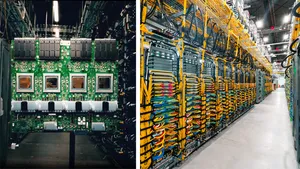Cloud Covered: What was new in Google Cloud in June

Summer’s here, but that's not the only big thing that arrived this month: We welcomed new partners and have new data technology-related updates to share. Read on for noteworthy Cloud updates in June.
Google will acquire Looker.
We announced our intent to acquire Looker, a company that offers business intelligence, data application, and embedded analytics software. These kinds of tools are important for modern businesses, so they can use all the data they have available to make decisions, and see visualizations of data with graphics and charts. Looker will help extend the analytics tools we already have at Google Cloud. It will let users at businesses define which metrics to use across different sources of data, so everyone can see the same information. Plus, Looker will bring strong analytics technology that can be embedded into other applications that a business is using.
A cloud data warehouse partner came on board.
Yes, data analytics is a big topic at Google Cloud these days. If you think about your own data use—photos and music, for example—you can start to get an idea of how much data exists for businesses. They want to analyze that data to understand more about what’s important to their business—but the sheer volume of data makes it challenging. Cloud data warehouses help to store, manage, and analyze all that data to find useful information. This month, we announced a partnership with data warehouse provider Snowflake, which will give people another way to bring in a wider variety of data sources to Google Cloud, then use and analyze all that data.
School’s out, but the learning never stops.
We announced a new Google Cloud certification challenge in June: Study, take an exam, get certified within 12 weeks, and you’ll get a $100 Google Store voucher. These certifications are becoming more important as employers recognize how important cloud skills are to their businesses, and there are different levels of certifications based on experience level. Plus, we announced some new Qwiklabs quests—self-paced labs designed to educate cloud developers. The quests help developers understand what metrics can be observed using Kubernetes technology and how to use it securely to deploy containers in real life.
Cloud-native is an important new concept.
“Cloud-native” means that systems that provide business users with the tools they need, like email, applications and more, have been designed from scratch to best take advantage of the unique capabilities of the cloud. This is different from moving existing technology systems to the cloud without making a lot of changes to the way they’re set up, sometimes known as “lift and shift.” We shared how building cloud-native systems is different from traditional approaches, and how businesses should plan with those differences in mind.
G Suite added even more security controls.
With the help of machine learning, Gmail already blocks up to 99.9 percent of spam, phishing and malware from ever reaching your inbox. This month, we added even more features in Gmail to further protect businesses, including a security sandbox, which lets IT teams analyze email attachments that might be malicious, and sophisticated machine learning to protect emails from malware and phishing. Check out this post to learn more about other G Suite happenings.
Blockchain and cloud can work together.
Blockchain is a technology usually associated with cryptocurrency, but it can also be used to make applications more secure. This post about building applications that use both cloud and blockchain explains how to get the most out of blockchain’s capabilities and the efficiency of cloud. Using this combination of cloud and blockchain can help make transactions private, and enable more accurate predictions.
That’s a wrap for June. To find more stories, visit the Google Cloud blog.






